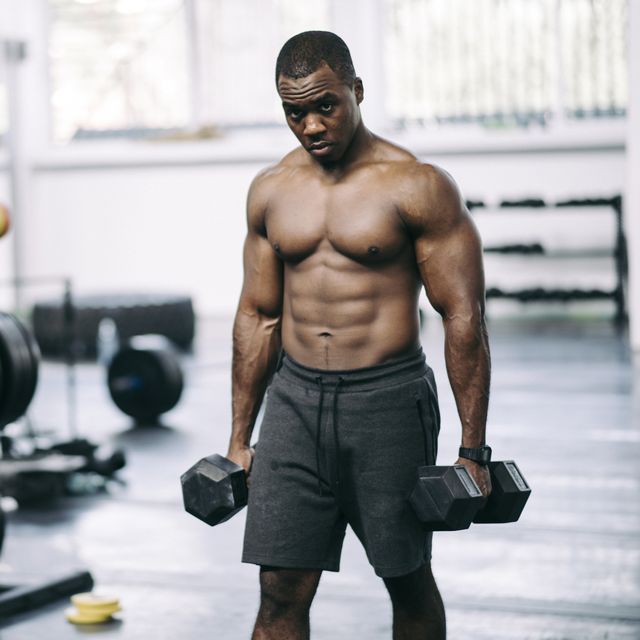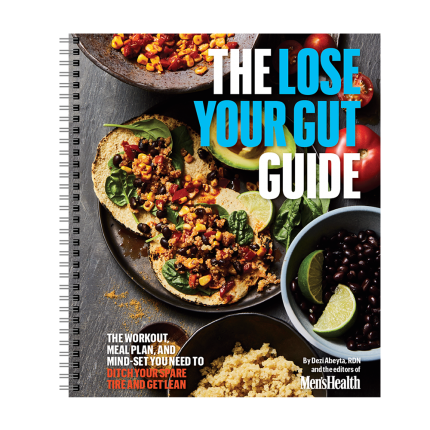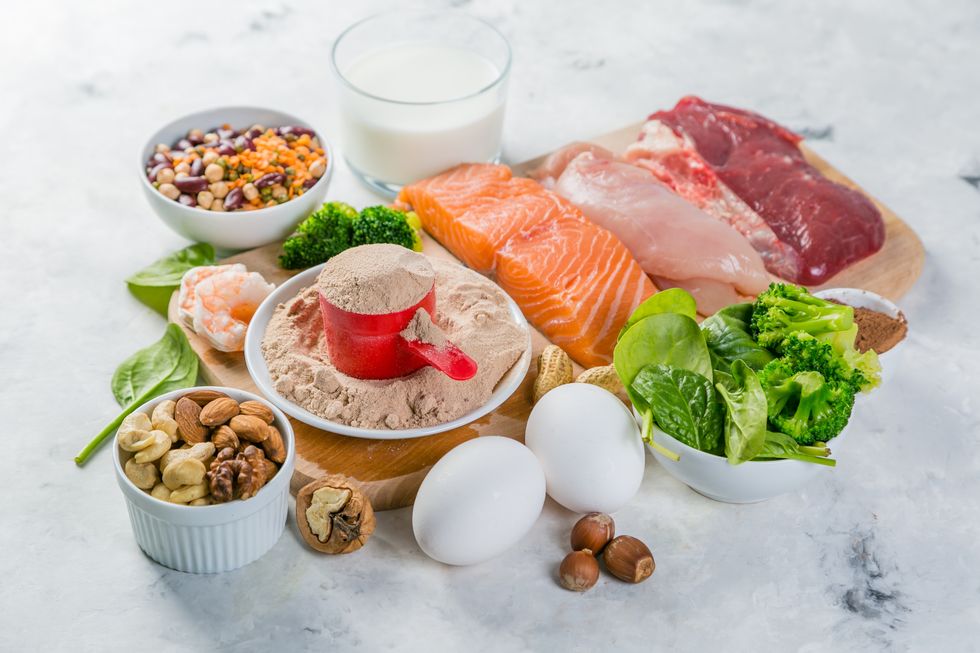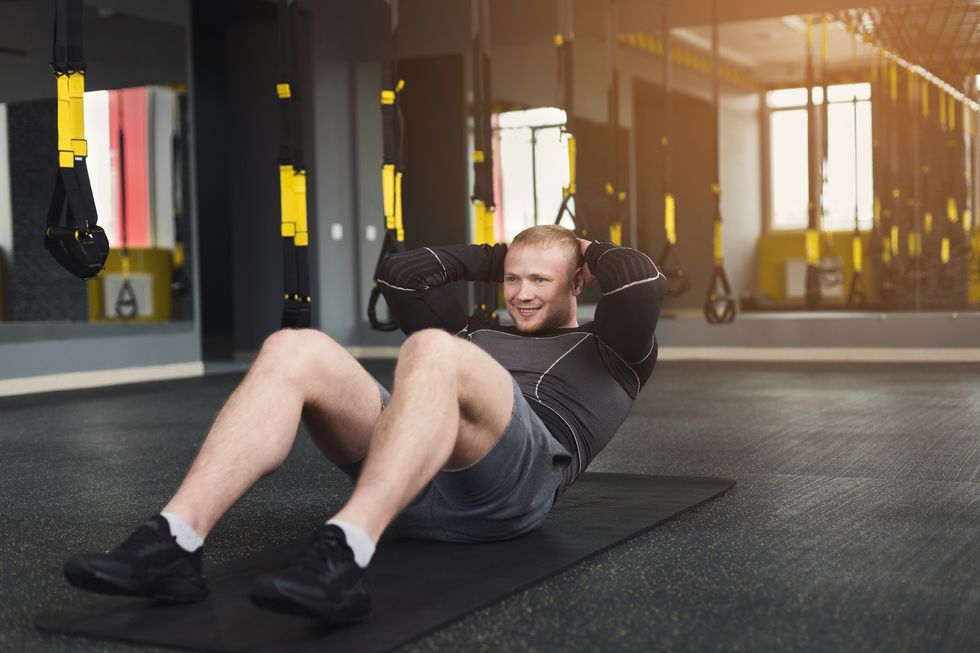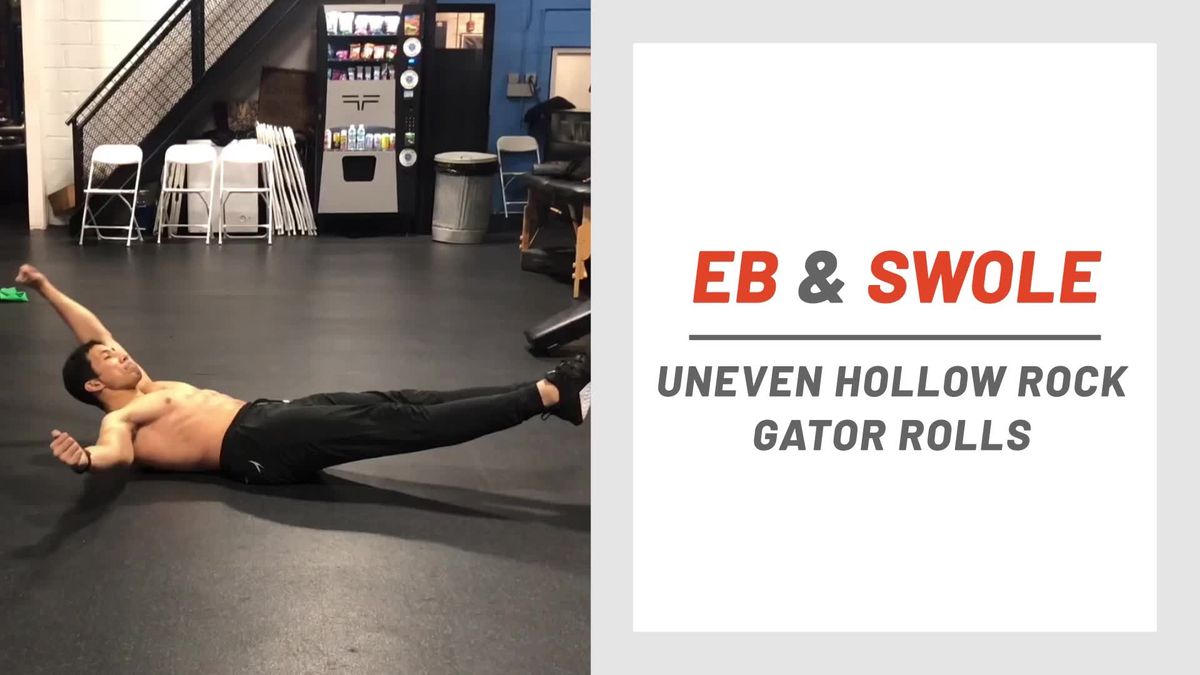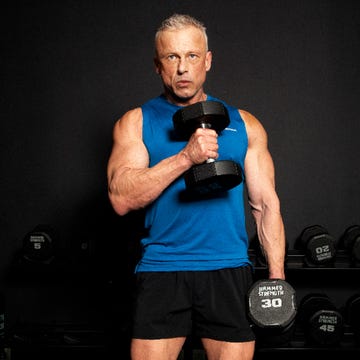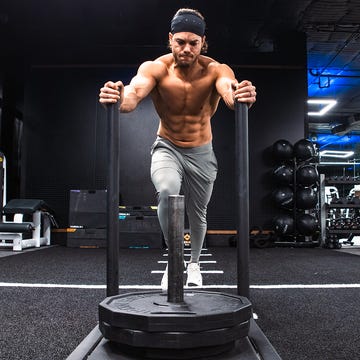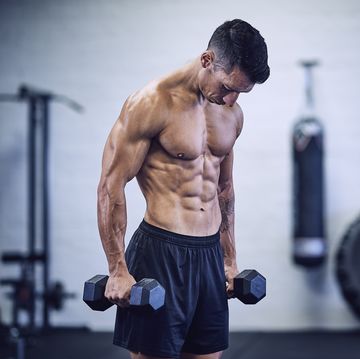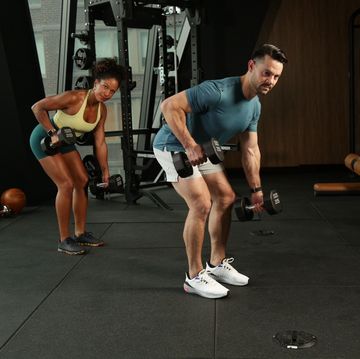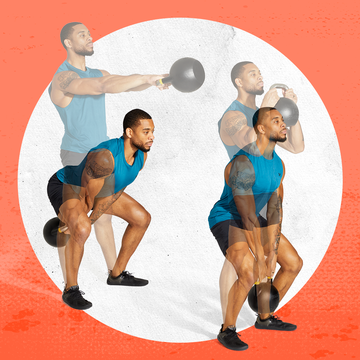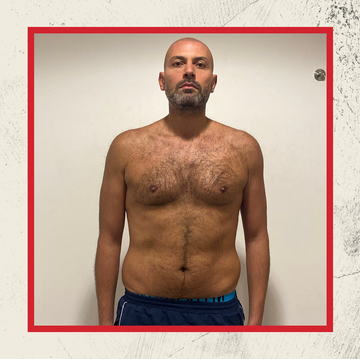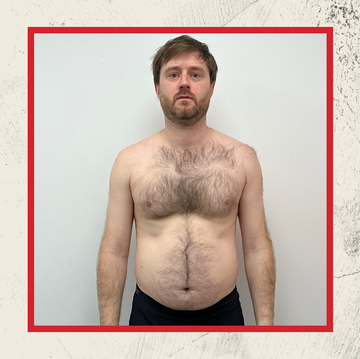The secret to the six-pack abs you’ve always wanted goes far beyond 100 situps a day. But that doesn’t mean it takes hours upon hours of ab work.
No, the chiseled core you’ve always wanted has long been about more than a few daily minutes of workout — and it’s always been about more than merely “training” your abs. In fact, ab training is the least of your worries.
Truth be told, you don’t actually need that many ab exercises to build the abs you want. What you need is a holistic approach to fitness, one that takes into consideration your diet, some smart core training, and fat-incinerating total-body movements, too.
It’s an approach that isn’t easy, but it isn’t as extremist as you may think, either. No, you don’t have to say “no” to every M&M in sight, and you don’t need to drip buckets of sweat every single workout. You don’t need to train 365 days a week, and you don’t need to do core moves until you can’t feel your midsection. In fact, you can probably build the midsection you’ve always wanted in an hour or so a day, 4 to 5 days a week.
The key: A smart, targeted approach that includes equal parts discipline and hard gym work—and some occasional dietary freedom too. Follow these tips below to get started on the road to a six-pack.
Start in the Kitchen
Abs aren’t just made in the weight room — the real work starts in the kitchen. You’re going to need to approach your diet with the same discipline you bring to your workouts.
Some experts recommend eating six small meals a day, instead of the more conventional three, cutting out added sugars and processed foods, and loading up on dependable sources of protein to help build new muscle in your midsection. Before you commit to any new diet, though, speak to your doctor and/or a nutritionist to see what they believe will work best for you.
You’ll also want to drink plenty of water; aim to drink upwards of a gallon a day if you can. Keeping your body hydrated can help control hunger cravings.
Work Every Single Muscle
"Muscle is your body's primary fat burner," said Rasmussen. Your muscles require energy to contract, which is why you burn calories when you exercise. But resistance training, unlike running or cycling, also causes a significant amount of damage to your muscle fibers. And that's a good thing.
"Your body has to expend energy to repair and upgrade those fibers after your workout," Rasmussen continued. "And a single total-body weight-training session can boost your metabolism for up to two days."
So you shouldn't neglect a single inch of your body. That goes double for the legs because, when you train legs, you’re essentially training your whole body. Think about it: A squat or deadlift doesn’t just tax hamstrings, glutes, and quads, but it also challenges your core (and those abs) to maintain stability and stay braced tightly.
No wonder Syracuse University researchers determined that people burned more calories the day after a lower-body resistance session than the day after they worked their upper bodies.
Your lower half houses more muscle. The upshot: "A busy guy's smartest approach is to train his entire body every other day," says trainer Craig Rasmussen, C.S.C.S. "That allows you to elevate your metabolism maximally all week long, even though you're working out only three or four days a week."
Build your workouts around complex, multijoint movements like squats, deadlifts, and cleans, and watch the abs gradually show.
Don't Max Out On Crunches
"You can do lots of crunches and situps and still have a weak core," said trainer Mike Wunsch, C.S.C.S. "We see that all the time."
The reason: Classic ab moves like crunches and situps work the muscles that allow you to flex (that is, round) your lower spine. True core exercises, on the other hand, train the muscles much, much more than that, says MH fitness director Ebenezer Samuel, C.S.C.S. “Your abs can rotate your torso, fight against rotation (anti-rotation), and brace your torso, in addition to flexing your lower spine,” says Samuel. “You should work to train those other traits too.”
And you can do that with better core exercises than crunches. Planks are solid (and we’ll come back to that soon), mountain climbers and ab-wheel rollouts work, and Samuel loves hollow body hold and rock variations.
“You can do so much with hollow body holds and rocks,” he says. “They seem like mere bracing moves, but you can train anti-rotation and rotation from that position too.”
Not sure what hollow body workout to do? Try this one to get started.
Incorporate these targeted ab moves not as the entree in your workouts but as side dishes. Keep focusing on those big exercises (squats, deadlifts, etc.), then wrap up workouts with 5 to 10 minutes of ab work. It never hurts to directly train your abs — unless you’re burning time you should have spent training larger bodyparts.
Master the Plank
The plank, and its many variations, is one of the most important exercises you can do. The basic move may appear boring and easy—after all, you look like you're simply holding a pushup position with your weight supported on your forearms or hands.
"The plank is easy only if you're doing it incorrectly or don't know how to make it more challenging," said Wunsch. What's more, he adds, the plank is key because it teaches you to make your core stiff. "That's a skill you need for almost every exercise."
So how do you perfect this exercise? Focus on keeping your spine aligned, squeezing your core and glutes to activate your muscles. And remember that you can always evolve the plank to incorporate more challenge while maintaining that tight core and glutes. Try this resistance band variation.
Don't Spend Hours On the Abs or the Treadmill
While five minutes of exercise a day isn't enough to reveal your abs, it is about the right amount of time to dedicate to targeted core training.
"We've found that just 2 to 4 sets of one or two core exercises is quite effective," Rasmussen said. "Our goal is to make you stronger, not more tired."A 5-minute core routine prior to weight training has a side benefit, too. "It revs up your core muscles so they fire better as you do other exercises," Rasmussen says.
"If you have only 30 to 40 minutes to devote to a workout, then every second has to count," Rasmussen said. "In those cases, our clients do zero running."
His contention is that you can achieve faster fat loss with resistance training. How so? First, drop the assumption that running burns more calories than lifting does.
A University of Southern Maine study found that a single set of a weight-training exercise torches as many calories as running at a 6-minute-mile pace for the same amount of time. So for every second you spend lifting weights, your body is expending high amounts of energy. Add high intensity interval training (HIIT) principles to your workout, and you could see even more gains.
There's also the metabolism boost of weight training. "Resistance training has a much larger metabolic impact than long-distance running does," Rasmussen said. "Plus, your body is being given a stimulus to gain strength and build new lean tissue."
One last efficiency benefit: Lifting weights through a full range of motion can improve your flexibility as well or even better than static stretching does, according to a University of North Dakota study.
Keep Your Body Moving
"Our goal is to pack as much physical work as possible into whatever time our clients have," said Wunsch. To that end, the trainers frequently implement supersets and circuits — strategies that save time without sacrificing results. To understand why, you'll need a few quick definitions.
Straight sets: This is a traditional weight-training routine, in which you complete all the sets of a given exercise before moving on to the next.
Alternating sets: These involve alternating between exercises that train your body using two noncompeting movements. For example, you pair an upper-body exercise that works the muscles on your front side — a pushup or bench press, say — with a lower-body exercise that emphasizes the muscles on your back side — the deadlift, for example.
The idea is that you work a group of muscles with one exercise, but instead of sitting around for a full two or three minutes while that muscle group recovers, you perform an exercise that doesn't heavily engage those same muscles. As a result, you can cut your rest time in half or eliminate it completely.
Circuits: These are similar to alternating sets, except that they involve three or more exercises. You can rest after each exercise in the circuit, or only after the last exercise.
How much time can these techniques save? A 2011 Spanish study found that men who trained with circuits achieved the same gains as those who trained with straight sets —yet their workouts were 42 percent shorter. But that's not to suggest you should hit the showers early. No, it means circuits and alternating sets can help you squeeze more total sets into the same sweat session.
